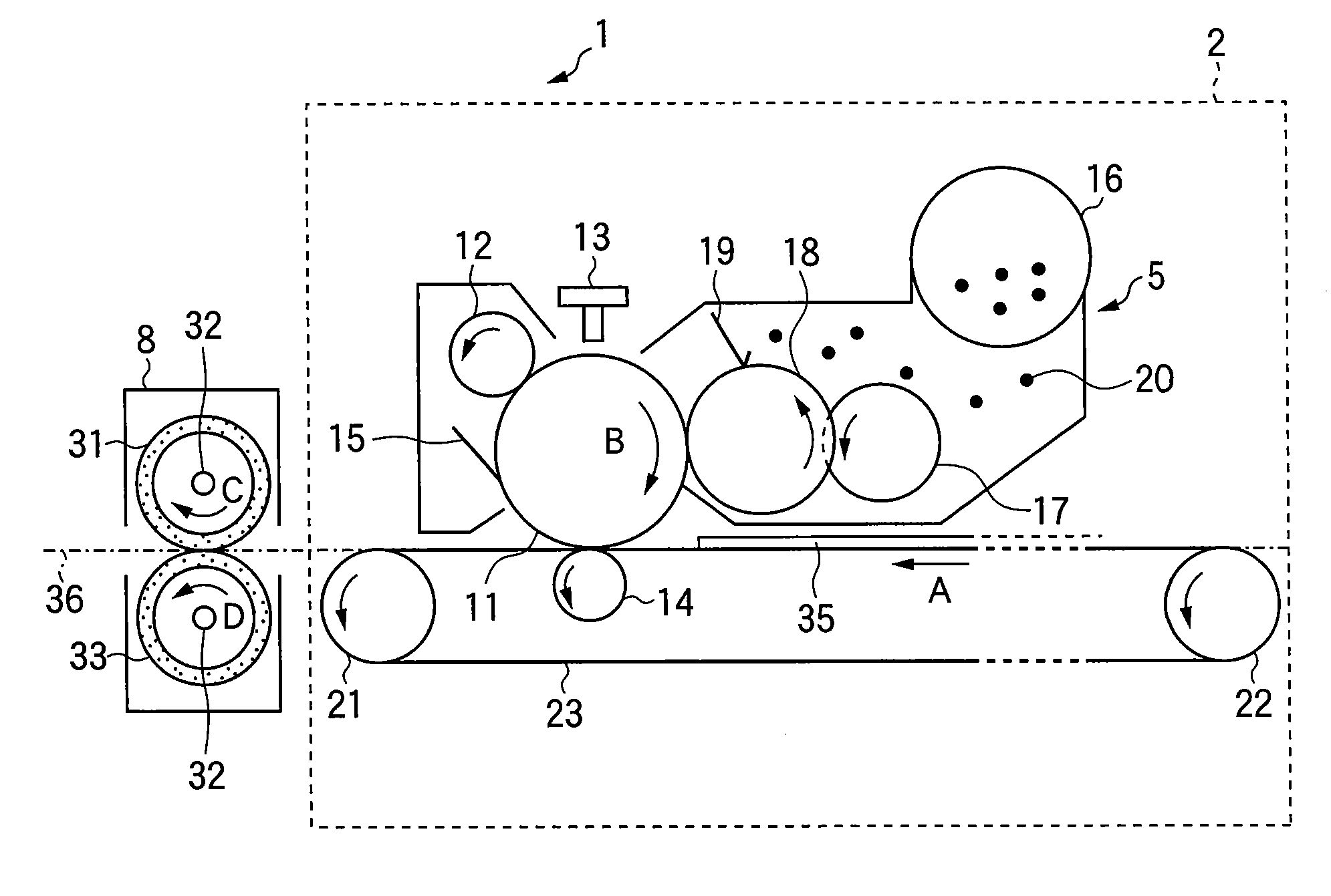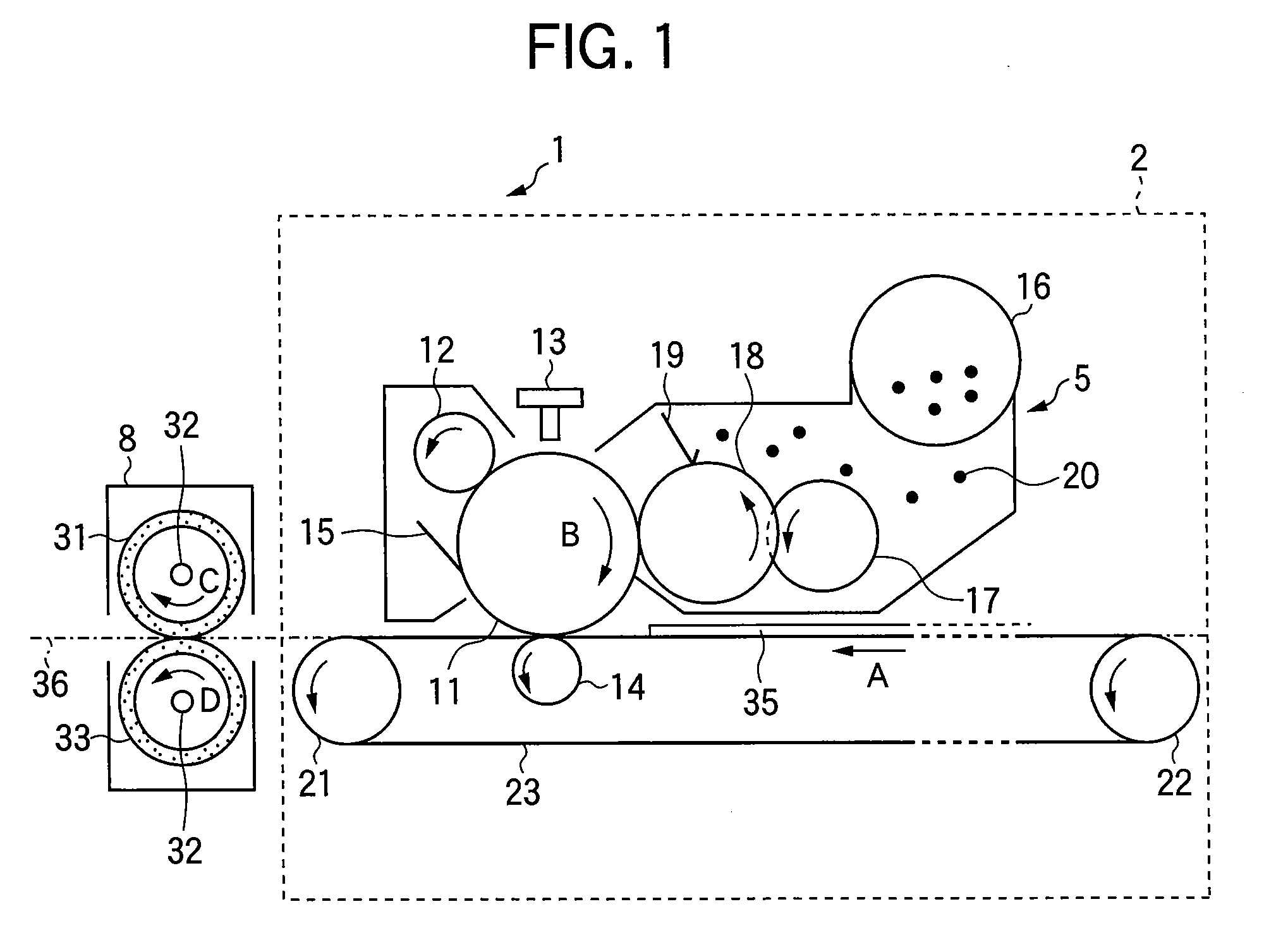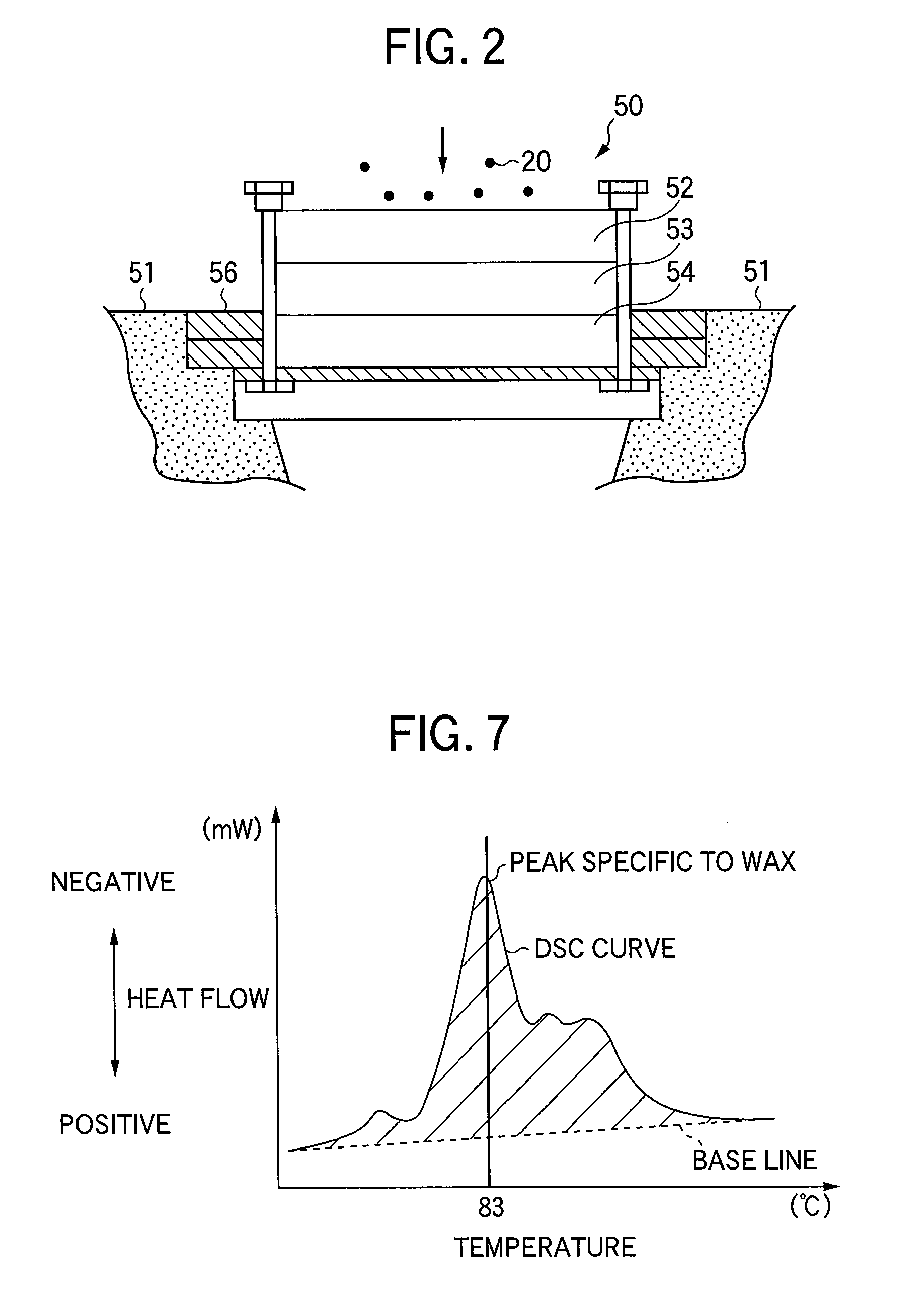Toner and image forming apparatus that uses the toner
- Summary
- Abstract
- Description
- Claims
- Application Information
AI Technical Summary
Benefits of technology
Problems solved by technology
Method used
Image
Examples
example 1
[0064]The following materials were placed in a Henschel Mixer: 100 weight parts of polyester resin (number molecule average molecular weight Mn=3700, glass transition temperature Tg=62° C. as a binder resin) as a binder resin; 5.0 weight parts of carnauba wax (melting point 83° C. equal to an endothermic peak temperature specific to wax); 4.5 weight parts of phthalocyanine blue (colorant); and 2.5 weight parts of a charge control agent.
[0065]The materials were then agitated and sufficiently mixed in a Henschel Mixer.
[0066]The mixture was heated at 120° C. to melt in a roll mill for approximately 3 hours, and was then cooled to room temperature. The kneaded material was pulverized to a powder, and was subsequently classified into a base toner. The base toner was then blended with a mixture of 0.30 weight parts of hydrophobic silica powder (Aerosil R-972, available from Aerosil Japan, average primary particle diameter 8 nm) and 2.7 weight parts of hydrophobic silica powder RX50 (avail...
example 2
[0072]The following materials were placed in a Henschel Mixer: 100 weight parts of polyester resin (number molecule average molecular weight Mn=3700, glass transition temperature Tg=62° C.) as a binder resin; 5.0 weight parts of paraffin wax (melting point 60° C.); 4.5 weight parts of phthalocyanine blue (colorant); and 2.5 weight parts of a charge control agent.
[0073]The materials were then agitated and sufficiently mixed in the Henschel Mixer.
[0074]The mixture was heated at 120° C. to melt in a roll mill for approximately 3 hours, and was then cooled to room temperature. The kneaded material was pulverized to a powder, and was subsequently classified into a base toner. The base toner was then blended with a mixture of 0.30 weight parts of hydrophobic silica powder (Aerosil R-972, available from Aerosil Japan, average primary particle diameter 8 nm) and 2.7 weight parts of RX50 (available from Aerosil Japan, average primary particle diameter 45 nm), thereby obtaining a final toner ...
example 3
[0079]The following materials were placed in a Henschel Mixer: 100 weight parts of polyester resin (number molecule average molecular weight Mn=3700, glass transition temperature Tg=62° C.) as a binder resin; 5.0 weight parts of carnauba wax (melting point 100° C.); 4.5 weight parts of phthalocyanine blue (colorant); and 2.5 weight parts of a charge control agent.
[0080]The materials were then agitated and sufficiently mixed in the Henschel Mixer.
[0081]The mixture was heated at 120° C. to melt in a roll mill for approximately 3 hours, and was then cooled to room temperature. The kneaded material was pulverized to a powder, and was subsequently classified into a base toner. The base toner was then blended with a mixture of 0.30 weight parts of hydrophobic silica powder (Aerosil R-972, available from Aerosil Japan, average primary particle diameter 8 nm) and 2.7 weight parts of RX50 (available from Aerosil Japan, average primary particle diameter 45 nm), thereby obtaining a final toner...
PUM
| Property | Measurement | Unit |
|---|---|---|
| Temperature | aaaaa | aaaaa |
| Fraction | aaaaa | aaaaa |
| Linear density | aaaaa | aaaaa |
Abstract
Description
Claims
Application Information
 Login to View More
Login to View More - R&D
- Intellectual Property
- Life Sciences
- Materials
- Tech Scout
- Unparalleled Data Quality
- Higher Quality Content
- 60% Fewer Hallucinations
Browse by: Latest US Patents, China's latest patents, Technical Efficacy Thesaurus, Application Domain, Technology Topic, Popular Technical Reports.
© 2025 PatSnap. All rights reserved.Legal|Privacy policy|Modern Slavery Act Transparency Statement|Sitemap|About US| Contact US: help@patsnap.com



